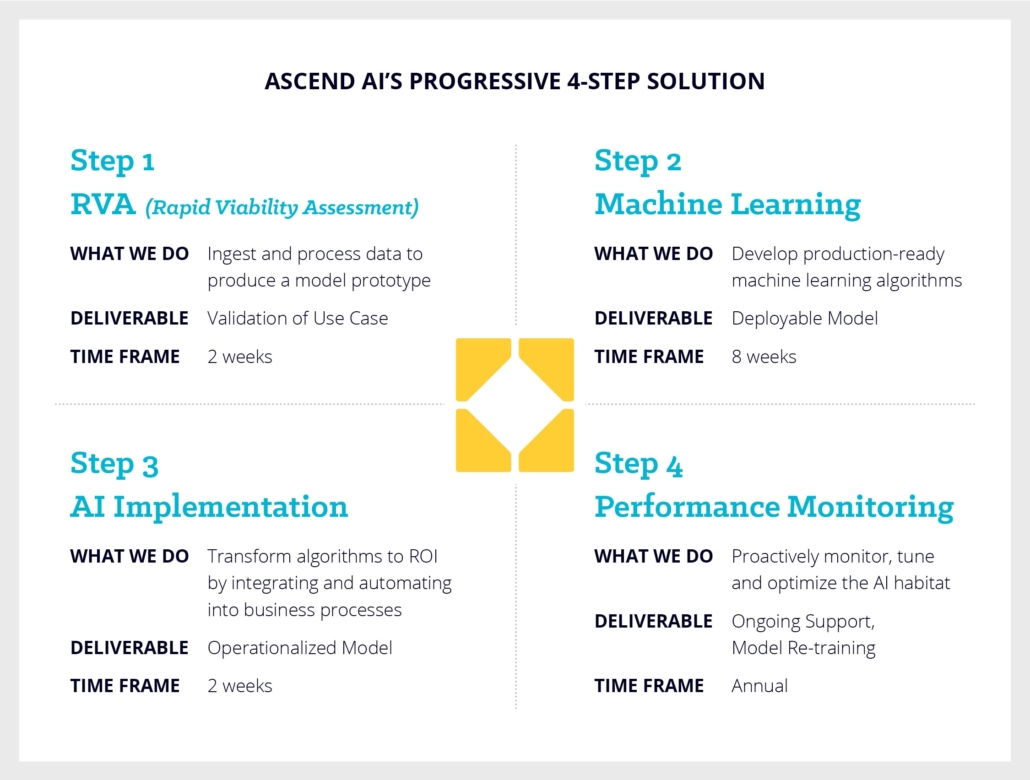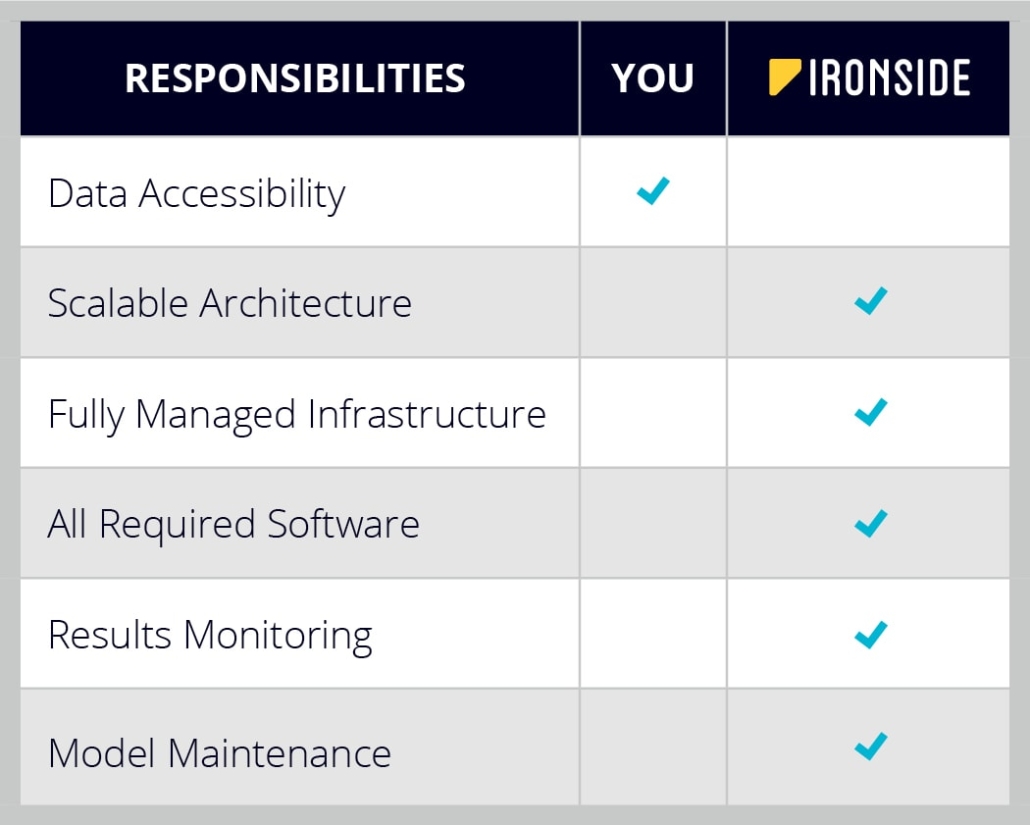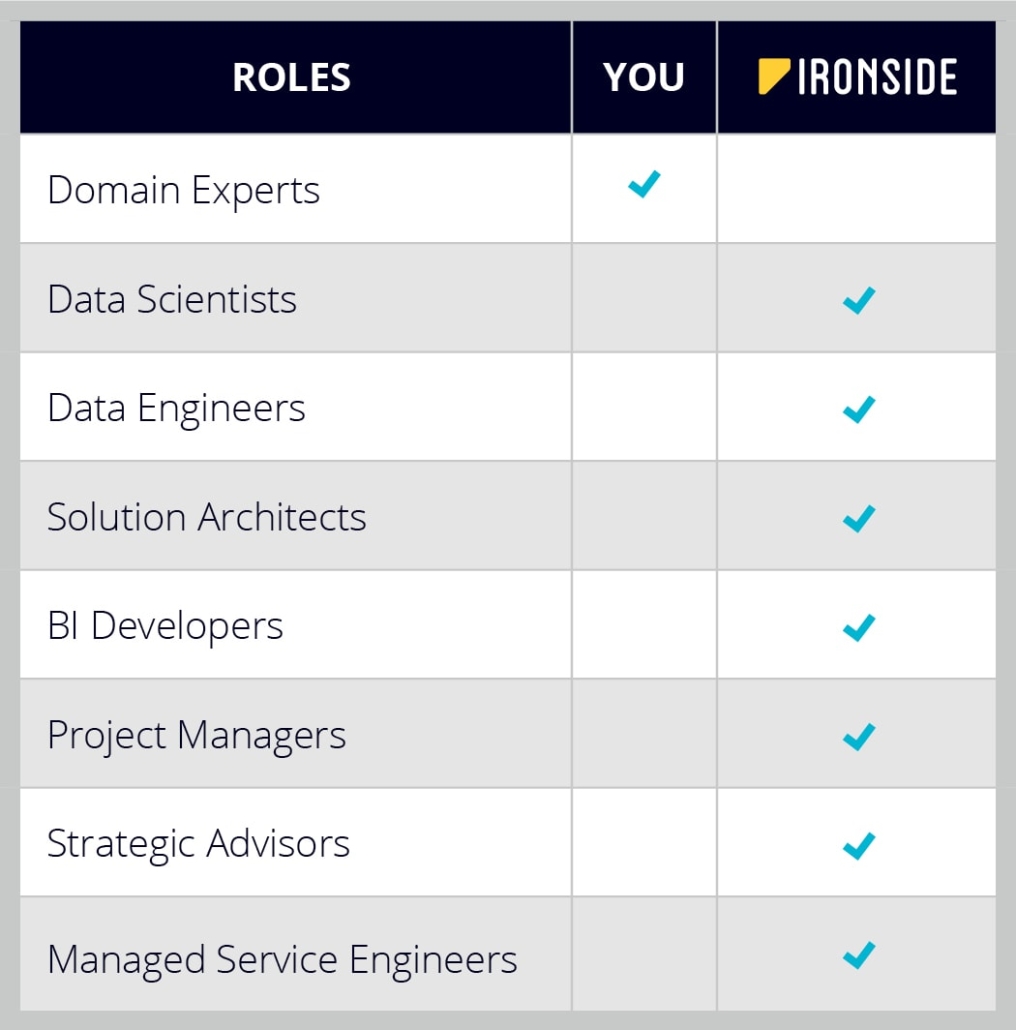Ironside’s Take30 with a Data Scientist series was typically targeted towards business leaders, with topics focused on strategy, including use-case development advice, de-risking AI with Data Science-as-a-Service, and ways to overcome common barriers to AI adoption. We also covered technical concepts like Model Evaluation and Feature Store Development. On top of that, we took several deep dives into technology partners including IBM Watson Auto AI, AWS Sagemaker Studio, Snowflake and DataRobot. Finally, we had a couple industry spotlights where we explored common use cases in Higher Education and Insurance.
Several attendees have shared that these sessions bridge the gap between the technical world of Machine Learning and that of their business, which in turn has helped them to know how to bridge that gap within their own organizations. For technicians, it has helped them to understand how to talk to the business and draw out use cases and help the business adopt solutions. For the business leaders, it’s helped them know what to ask of the data science team or what to look for in building a team.
Overcoming the Most Common Barriers to AI Adoption (2/25/21)
Because so many organizations are in the early stages of AI Adoption, this is likely the most important topic to CIOs and business leaders in the Data Science series. This session discusses the challenges with people, infrastructure, and data that every organization faces and offers sound advice on how to overcome them.
Is Data Science-as-a-Service Right for your Organization? (5/19/20)
AscendAI, Ironside’s Data Science-as-a-Service, provides many benefits to organizations that are in the early or mid-stages of AI Adoption. Learn more about Ironside’s offering and how it could reduce your time to ROI to as little as 12 weeks.
How Snowflake Breaks the Chains Holding Your Data Science Team Back (9/10/20)
We hosted a number of Technology related secession with Partners such as Snowflake. This session dove a bit deeper than Data Science Best Practices: Feature Stores. Other Technology related sessions include Watson Studio, AWS Sagemaker, and a data enrichment session with Precisely, titled More Data, More Insight: The Value of Data Enrichment for Analytics.
Data Science work requires infrastructure that is scalable, cost-effective, and with easy access to multiple data sources. Snowflake provides this and much more to a data science tech stack. It also integrates easily with other machine learning platforms like DataRobot, AWS, and Azure. Snowflake is particularly valuable for data sharing with external data sources.
Leveraging Data for Predicting Outcomes in Higher Ed (6/30/20)
We hosted an industry-related session sharing how Higher Education is leveraging machine learning in very creative ways; this ended up being one of our top attended sessions for the Take30 series. In this webinar, we reviewed some of the ways that higher ed is using machine learning such as enrollment management, space planning and student retention. We also discussed some of the use cases that are helping universities cope with the challenges and nuance of COVID-19. We also hosted another industry specific session on Insurance.
______
As we continue our Take30 with a Data Scientist series, we’ll continue to partner with experts in Machine Learning technology to offer demos and successful solutions as well as strategic sessions for business leaders. We also hope to spotlight some of our clients this year and the exciting AI driven applications we are developing for them in Retail, Insurance, Higher Ed, and Manufacturing. Coming up on May 20th, we will be hosting an industry focus for Banking.
We’d love to have 1-on-1 conversations to discuss any challenges you may be facing with AI adoption. Please feel free to sign up for a spot with Pam Askar, our Director of Data Science.




